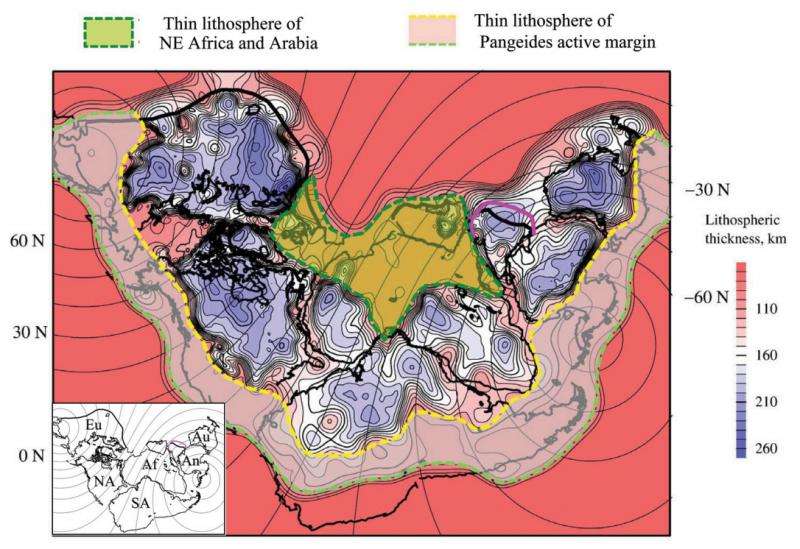Piecing together the Pangea puzzle

Two hundred and fifty million years ago, all the major continents were joined together, forming a continent called Pangea (which means "all land" in Greek). The plate thickness of continents can now be measured using seismology, and it is surprisingly variable, from about 90 km beneath places like California or Western Europe, to more than 200 km beneath the older interiors of the U.S., Eastern Europe, and Russia.
Authors Dan McKenzie, Michael C. Daly, and Keith Priestley wondered what the pattern of plate thickness looked like before Pangea broke up—so they reconstructed Pangea using Rayleigh wave tomography and plate tectonics, taking the plate thickness with the continents as they moved them.
To their surprise, the thick parts of the plates all came together to form a boomerang-shaped arc. The outside of the boomerang consists of a subduction zone where oceanic plates were returned to the mantle. The inside of the boomerang consists of plate with a thickness of about 100 km, which was strongly deformed and heated about 600 million years ago. Pangea itself was assembled from a number of different plates. The continental deformation that took place during this assembly must have been controlled by the plate thickness, since it produced a continuous boomerang shaped region of thick plate.
More information: The lithospheric structure of Pangea, Dan McKenzie et al., Bullard Labs, University of Cambridge, Cambridge, UK. Published online ahead of print on 17 July 2015; http://dx.doi.org/10.1130/G36819.1.
Journal information: Geology
Provided by Geological Society of America



















